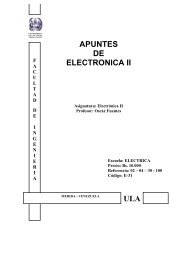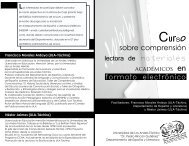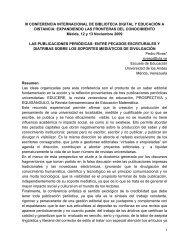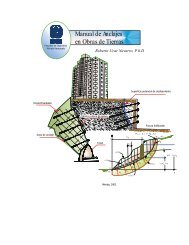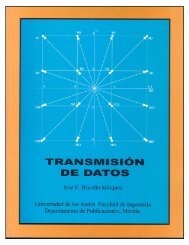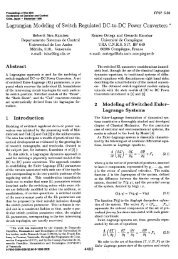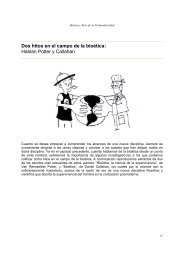Passivity-based Control of Euler-Lagrange Systems:
Passivity-based Control of Euler-Lagrange Systems:
Passivity-based Control of Euler-Lagrange Systems:
You also want an ePaper? Increase the reach of your titles
YUMPU automatically turns print PDFs into web optimized ePapers that Google loves.
viii<br />
Preface<br />
best suited for them. As the title suggests, the class we consider covers avery broad<br />
spectrum (<strong>Euler</strong>{<strong>Lagrange</strong> systems with mechanical, electrical and electromechanical<br />
applications) however, detailed analysis is presented only for robots, AC machines and<br />
power converters. We have found that this set <strong>of</strong> applications is suciently general<br />
|it has at least kept us busy for the last 10 years!<br />
Dierent considerations and techniques are used to solve the various problems<br />
however, in all cases we strongly rely on the information provided by the variational<br />
modeling and, in particular, concentrate our attention on the energy and dissipation<br />
functions that dene the dynamics <strong>of</strong> the system. A second unifying thread to all<br />
the applications is the fundamental concept <strong>of</strong> passivity. Finally, a recurrent theme<br />
throughout our work is the notion <strong>of</strong> interconnection that appears, either in the form<br />
<strong>of</strong> a feedback decomposition instrumental for the developments, or as a framework<br />
for focusing on the relevant parts <strong>of</strong>amodel.<br />
An important feature <strong>of</strong> the proposed controller design approach is that it is<br />
<strong>based</strong> on the input{output property <strong>of</strong> passivity, hence it will typically not require<br />
the measurement <strong>of</strong> the full state to achieve the control objectives. Consequently,<br />
throughout the book we give particular emphasis to (more realistic, but far more<br />
challenging) output{feedback strategies.<br />
The book is organized in the following way. In Chapter 1 we present rst a<br />
brief introduction that explains the background <strong>of</strong> the book and elaborates upon<br />
its three keywords: <strong>Euler</strong>{<strong>Lagrange</strong> (EL) systems, passivity and applications. The<br />
notion <strong>of</strong> passivity{<strong>based</strong> control (PBC) is explained in detail also in this chapter,<br />
underscoring its conceptual advantages. The main background material pertaining<br />
to EL systems is introduced in Chapter 2. In particular we mathematically describe<br />
the class <strong>of</strong> systems that we study throughout the book, exhibit some fundamental<br />
input{output and Lyapunov stability properties, as well as some basic features <strong>of</strong><br />
their interconnection. We also give in this section the models <strong>of</strong> some examples <strong>of</strong><br />
physical systems that will be considered in the book.<br />
The remaining <strong>of</strong> the book is divided in three parts devoted to mechanical, electrical<br />
and electromechanical systems, respectively. The rst part addresses a class <strong>of</strong><br />
mechanical systems, <strong>of</strong> which a prototypical example are the robot manipulators, but<br />
it is not restricted to them. For instance, we consider also applications to simple models<br />
<strong>of</strong> marine vessels and rotational translational actuators. The results concerning<br />
mechanical systems are organized into set point regulation (Chapter 3), trajectory<br />
tracking (Chapter 4) and adaptive disturbance attenuation, with application to friction<br />
compensation (Chapter 5). The theoretical results are illustrated with realistic<br />
simulation results. In this part, as well as in other sections <strong>of</strong> the book, we carry out<br />
comparative studies <strong>of</strong> the performance obtained by PBC with those achievable with<br />
other schemes. In particular, for robots with exible joints, we compare in Chapter<br />
4 PBC with schemes <strong>based</strong> on backstepping and cascaded systems.<br />
The second part <strong>of</strong> the book is dedicated to electrical systems, in particular DC-



